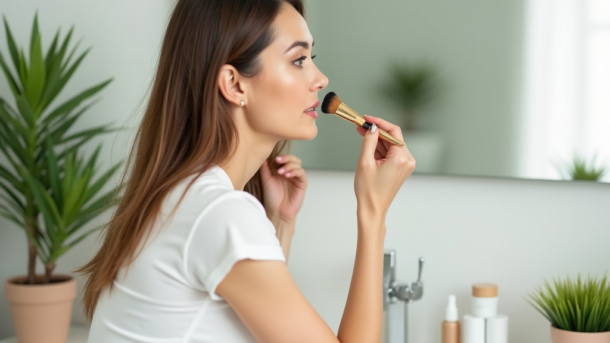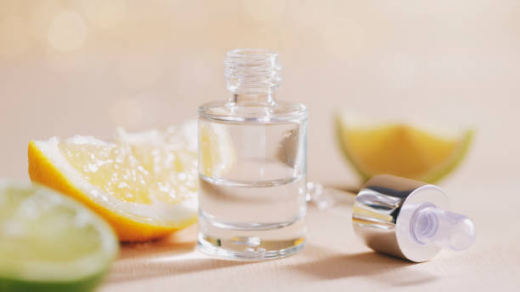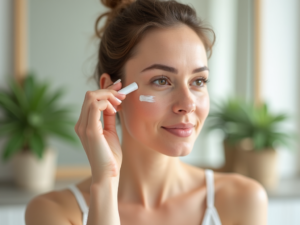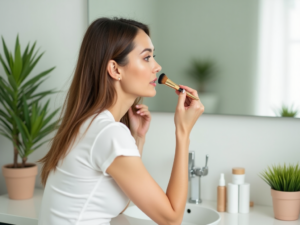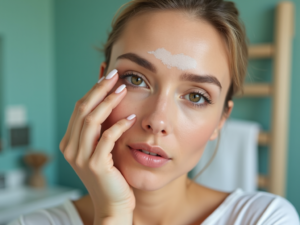Choosing between powder and liquid foundation can be a daunting task for many beauty enthusiasts. Each type offers unique benefits and challenges, and the right choice largely depends on your skin type, desired coverage, and personal preferences. In this comprehensive guide, we’ll explore the key differences between powder and liquid foundations, helping you decide which option is best suited for your cosmetic needs.
Understanding Powder Foundation: The Mattifying Marvel

Powder foundation is a tried-and-true option for those seeking a lightweight, matte finish. Ideal for oily or combination skin, it helps to absorb excess oil and keep shine at bay throughout the day. Thanks to its pressed or loose nature, powder foundation provides buildable coverage, ranging from light to medium, without feeling heavy on the skin.
One of the main benefits of powder foundation is its portability. It typically comes in compact form, making it easy to carry around for touch-ups on the go. Moreover, it can double as a setting powder when applied over liquid foundation for extra durability and a velvety finish. However, it’s important to note that powder foundation may settle into fine lines and dry patches, so it might not be the best choice for mature or very dry skin.
Apply powder foundation using a fluffy brush or sponge applicator. Start with a light hand and gradually build up to the desired coverage. This method ensures a smooth and even application without caking. If you have sensitive skin, opt for powder foundations with minimal ingredients to avoid potential irritants.
Liquid foundation is a popular choice among makeup artists and beauty aficionados alike, prized for its versatility and range of finishes. From dewy to matte, there’s a liquid foundation to suit every skin type and desired effect. This type of foundation is particularly beneficial for dry or mature skin, as it often contains hydrating ingredients that provide moisture and enhance the skin’s natural glow.
One of the key advantages of liquid foundation is its buildable coverage, which can range from sheer to full. This allows users to achieve a seamless blend with their natural skin tone, covering imperfections such as blemishes and redness effectively. Liquid foundations also often include beneficial elements such as SPF protection and skin-nourishing vitamins, adding an extra layer of care to your routine.
Application methods for liquid foundation vary, including brushes, sponges, or fingers, and each can create a different finish. For a flawless application, ensure your skin is well-prepped with moisturizer and primer. This will help the foundation to glide effortlessly and maintain its longevity throughout the day.
Key Factors to Consider When Choosing Your Foundation

When deciding between powder and liquid foundation, consider several crucial factors to ensure you select the right product for your makeup regimen. Here’s a guide to help you make an informed choice:
- Skin Type: Oily skin types may benefit from the oil-absorbing properties of powder foundation, while dry skin types often favor the hydrating nature of liquid formulas.
- Desired Coverage: Powder foundation typically offers light to medium coverage, whereas liquid foundation can offer full coverage for those seeking to conceal more pronounced imperfections.
- Finish Preference: If you prefer a matte finish, powder foundation is a great choice. For a dewy, glowing look, a liquid foundation with luminous properties is ideal.
- Longevity: Consider how often you want to touch up your makeup throughout the day. Powder foundation is generally better for frequent touch-ups, while liquid foundation tends to have more staying power.
- Climate: In humid climates, powder foundations may hold up better against sweat and oil. Conversely, liquid foundations might be more suitable in dry conditions.
For those who find it difficult to choose just one type of foundation, combining both powder and liquid can offer the best of both worlds. This method allows you to tailor your coverage and finish to suit various occasions and needs. Start with a liquid foundation for a hydrated and even skin tone, and finish with powder application for a matte, polished look.
It’s not uncommon for beauty enthusiasts to keep both options in their makeup arsenal to cater to different skin conditions, events, and seasons. By understanding how and when to use each type, you can effectively create a flawless complexion no matter the situation.
Experiment with different products and techniques to find the perfect balance that works for you. Remember, makeup is an art form – don’t be afraid to try new combinations to discover what makes you feel your most confident and beautiful.
Conclusion
Choosing between powder and liquid foundation doesn’t have to be a strictly one-or-the-other decision. By understanding your skin type, desired coverage, and finish preferences, you can make an informed choice that integrates seamlessly into your beauty routine. Whether you decide on the matte, portable convenience of powder or the versatile, hydrating benefits of liquid, each has its place in creating a flawless face. Experiment, blend, and find the perfect match for your unique skin needs.
Frequently Asked Questions
1. Can I use powder and liquid foundation together?
Yes, you can use both together. Applying liquid foundation first and setting it with powder can enhance coverage and longevity.
2. Which foundation type is better for acne-prone skin?
Powder foundation is often preferred for acne-prone skin due to its oil-absorbing properties and lighter formula.
3. What is the best way to apply liquid foundation?
Using a damp makeup sponge or a foundation brush can help achieve a smooth and even application of liquid foundation.
4. Is powder foundation good for mature skin?
Generally, liquid foundation is more suitable for mature skin as it provides hydration and doesn’t settle into fine lines as much as powder.
5. How do I choose the right shade for my foundation?
Test multiple shades on your jawline in natural light to find the one that blends seamlessly with your neck and face.
